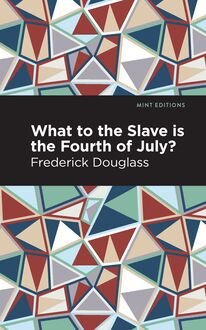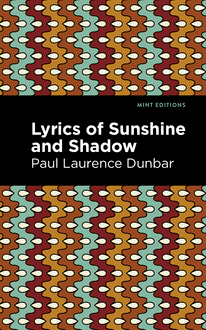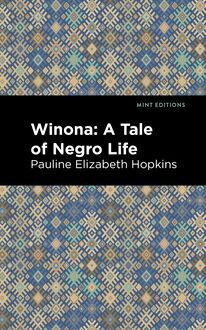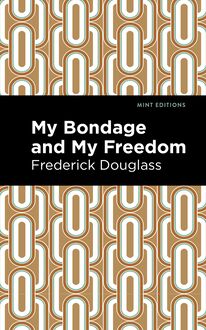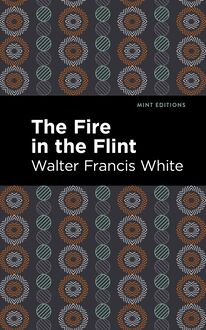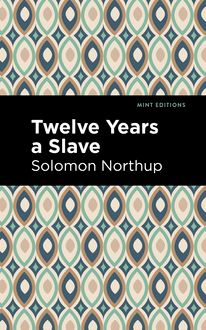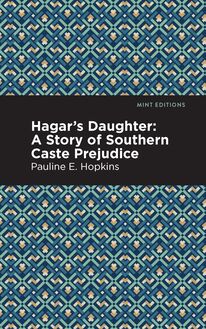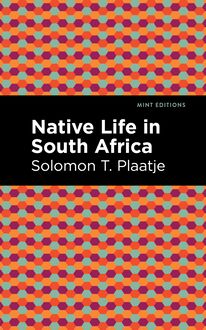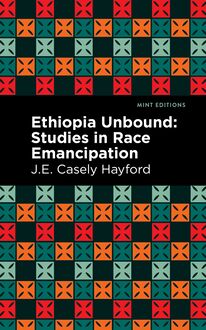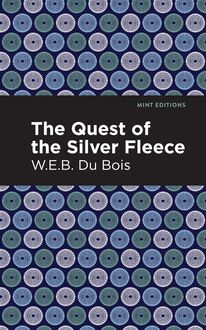-
 Univers
Univers
-
 Ebooks
Ebooks
-
 Livres audio
Livres audio
-
 Presse
Presse
-
 Podcasts
Podcasts
-
 BD
BD
-
 Documents
Documents
-
- Cours
- Révisions
- Ressources pédagogiques
- Sciences de l’éducation
- Manuels scolaires
- Langues
- Travaux de classe
- Annales de BEP
- Etudes supérieures
- Maternelle et primaire
- Fiches de lecture
- Orientation scolaire
- Méthodologie
- Corrigés de devoir
- Annales d’examens et concours
- Annales du bac
- Annales du brevet
- Rapports de stage
La lecture à portée de main
Vous pourrez modifier la taille du texte de cet ouvrage
Découvre YouScribe en t'inscrivant gratuitement
Je m'inscrisDécouvre YouScribe en t'inscrivant gratuitement
Je m'inscrisEn savoir plus
Vous pourrez modifier la taille du texte de cet ouvrage
En savoir plus

Description
Hope’s Highway: A Novel (1918) is a historical novel by Sarah Lee Brown Fleming. Published during the Harlem Renaissance, Fleming’s novel is a powerful work of fiction exploring the lives of formerly enslaved Black people living in the South during Reconstruction. Recognized as a leading advocate for the advancement of Black girls and women throughout her life, Fleming is a writer whose voice never falters from the task at hand: telling the story of her people. In the aftermath of the Civil War, the promise of the Emancipation Proclamation is fulfilled to with varying results throughout the South. On John Vance’s plantation, many of his former slaves have remained to work in their new capacity as wage laborers, fearful of change and confident in the relative kindness of their former master. Among them, Enoch receives financial support and an education, eventually rising to the role of first Black teacher in the Reconstruction South. When John Vance dies, his land and belongings are divided among his former slaves, including the influential Institute, now left for Enoch to run. As much as their situation promises some hope for the future, the specter of enslavement and prejudice lurks around every corner, forcing them to use caution when dealing with those who would sooner have them back in chains than treat them as fellow humans. Hope’s Highway: A Novel is a story of tragedy and redemption set in the South during the period of Reconstruction, a time of immense change and even greater promise in a nation only just emerged from the shadows of war. With a beautifully designed cover and professionally typeset manuscript, this edition of Sara Lee Brown Fleming’s Hope’s Highway: A Novel is a classic work of African American literature reimagined for modern readers.
Sujets
Informations
| Publié par | Mint Editions |
| Date de parution | 28 mai 2021 |
| Nombre de lectures | 0 |
| EAN13 | 9781513288093 |
| Langue | English |
| Poids de l'ouvrage | 1 Mo |
Informations légales : prix de location à la page 0,0350€. Cette information est donnée uniquement à titre indicatif conformément à la législation en vigueur.
Extrait
Hope’s Highway
A Novel
Sarah Lee Brown Fleming
Hope’s Highway: A Novel was first published in 1918.
This edition published by Mint Editions 2021.
ISBN 9781513283074 | E-ISBN 9781513288093
Published by Mint Editions ®
minteditionbooks.com
Publishing Director: Jennifer Newens
Design & Production: Rachel Lopez Metzger
Project Manager: Micaela Clark
Typesetting: Westchester Publishing Services
T O
The Following Leaders, Living and Dead, Who Have Championed, and Still Champion, The Higher Aspirations of the Black Man
T HIS B OOK IS D EDICATED
H ON . F REDERICK D OUGLASS
H ON . G EORGE T. D OWNING
H ON . R OBERT B. E LLIOTT
H ON . R ICHARD T. G REENER
H ON . W RIGHT C UNEY
H ON . F RANK G RIMKE
H ON . A RCHIBALD H. G RIMKE
H ON . J OHN M. L ANGSTON
H ON . E BENEZER D. B ASSETT
J UDGE J OSEPH L EE
D R . B OOKER T. W ASHINGTON
D R . W. E. B URGHARDT D U B OIS
B ISHOP A. W ALTERS
C ONTENTS F OREWORD I. S ANTA M ARIA II. J OHN V ANCE III. G RACE E NNERY IV. T HE L EADER’S F UNERAL V. T HE L YNCHING VI. S ANTA M ARIA, P AST AND P RESENT VII. G RACE E NNERY’S R ETURN TO N EW Y ORK VIII. T HE L ETTER THAT F AILED IX. T HE P ROPOSAL X. F RED T ROWER IN THE S OUTH XI. T HE F ARMERS’ C ONFERENCE XII. T OM B RINLEY IN C HAINS XIII. T OM B RINLEY’S E SCAPE TO THE N ORTH XIV. T OM IN L OVE XV. T OM B RINLEY R ESCUES G RACE E NNERY XVI. S PIRITED A WAY XVII. T HE W EDDING XVIII. T HE T RIAL XIX. T OM B RINLEY AT O XFORD XX. T HE C ALL OF HIS P EOPLE
F OREWORD
I have gained much information regarding the achievements and political status of the black man in America, and beyond the seas, from “The African Abroad,” by William H. Ferris, A.M.
S. L. B. F.
I
S ANTA M ARIA
B eautiful Santa Maria, land of the gods that nestles beneath wondrously blue skies, lies upon a luxurious carpet of green, on a prominence overlooking,—as did Psyche of the myths in her liquid mirror of old,—the limpid Bay of Joan.
In the seventeenth century wealthy Spaniards had come over here in large numbers from the Old World and, because of its seclusion, had chosen this heavenly spot for a home. Across the bay was to be seen another ideal place, Santa Barbara, where today only the ruins of a once most extensive cotton plantation remain to show the existence of former grandeur. Negro men and women may be seen working in the fields, which show a few patches of cultivation. Rickety cabins, scattered thickly here and there, tell the tale of the passing of the masters of this once thriving island and of the reign of the Blacks; for investigation will show that no white man lives there now.
In Santa Maria may also be seen ruins of an old monastery, built by the Spaniards in the seventeenth century. After the state became a part of the Union, and the Spaniards gradually dispersed, other settlers came to this secluded spot, which, until the Emancipation, was one of the most aristocratic plantation settlements of the whole South. And in those days cabin life of the better sort was a conspicuous feature of beautiful Santa Maria and of its neighbor, Santa Barbara. It seemed the purpose of the owners of the Blacks to have this the one place where slavery was of a higher order,—if degrees of serfdom be possible.
The approach to Santa Maria was very beautiful. Imagine a shell-road of great length and width, lined on either side with drooping willows,—moss-laden,—some interlocking, forming spacious arches, and others opening sufficiently at the top to let in the Southern sunlight in all its regal splendor. The effect was almost fairylike. And to add enchantment to the scene, one could for an instant imagine these drooping willows bowing, as it were, most hospitably to the traveler, as if ushering him on and on to the resplendent glories of Santa Maria.
In the days of its glory,—after the traveler had left the willows behind,—imposing residences might be seen as far as the eye could reach.
From the quarters, on summer nights, plantation melodies were wafted on balmy breezes, and, as one drew nearer, crooning lullabies, sung by dusky mothers, could be heard,—lullabies so full of rest and hope.
Honey, take yo’ res, on yo’ mamme’s breas’,
See dat light,—a-fadin’ ’mong de pine trees in de wes’,
Yes; de day is gone, night is comin’ on,
Darksome night mus’ come to us befo’ another dawn.
Whippo’will is callin’,—callin’ to his mate;
Mockin’-bird is callin’, too;
Pine trees is a-sighin’, babies is a-cryin’,
As de darksome night is passin’ through.
Go to sleep, ma little baby, go to sleep;
Shut yo’ weary eyelids, an’ don’ you weep;
Sleep an’ take yo’ res’, on yo’ mamme’s breas’,
Night can never harm you here.
Honey, don’ you see, dat it’s got to be:
Day an’ night, yes, day an’ night, till yo’ spirit’s free;
Den you’ll quit ma breas’ fur to go an’ res’
Wid another who can keep you safe from harm de bes’.
Masters here were more or less kind to their slaves, and, consequently, their reputation for gentleness spread far and wide. At the slave market one might observe a striking evidence of this; for whenever a buyer from Santa Maria or Santa Barbara came along, every slave showed up at his best upon the auction block.
When the deathknell to slavery was sounded and Lincoln signed the great Emancipation Proclamation,—which spelled Liberty for millions of slaves,—a great many of the Blacks in Santa Maria and Santa Barbara remained with their owners.
Of these slaveholders, John Vance,—regarded as one of the wealthiest in this realm,—freed and educated one of his loyal servitors, with the idea that, should the freedom that the bondmen craved come to them, he could impart to his people some of the essentials necessary for a recently emancipated race to understand. Thus, Enoch Vance, taking his master’s name, attracted much attention by his application and brilliancy at a Western university and returned to his former owner at the announcement of Freedom. Fortunately, he arrived in Santa Maria a few months before his benefactor’s death.
John Vance, because of the manumission of the Negroes, had lost some of his vast fortune, but in his great generosity, he left nearly half of what was left for the education of the Blacks, whom slavery had kept so long in ignorance.
Upon his deathbed he sent for his former slave.
“Go,” said he to Enoch, “and upon the land I shall give you, at the entrance of this beautiful Santa Maria,—land that I love so well,—facing the drooping willows and the shell-road, erect a school that shall be a guiding star to your people, lost on the road of ignorance. Be a leader to them,—be a Moses,—safely carrying them over the Red Sea to the Promised Land!”
II
J OHN V ANCE
J ohn Vance’s name was held in reverence by every Negro in and around Santa Maria. How many Black men and women in slavery had heard of this good man and prayed that some day they might become his property! Often, on moonlight nights, he would listen to the singing of his slaves, as they sat in their cabin doors, voicing the familiar plantation melodies,—the effect of which was marvelous,—as it passed from door to door on the balmy breezes. One song that particularly pleased their master was:
Lord, I’d rather go to Glory, Lord, I’d rather go to Glory,
Lord, I’d rather go to Glory, than to leave this master kind.
John Vance was in the habit of visiting his slaves in their cabins, he would talk with them, and thus he became a part of their lives. He never had occasion to whip a slave, never kept an overseer, neither did he ever have a runaway. When a slave became in any way obstinate or unruly, the master would only have to suggest in a kindly way, that perhaps the bondman would like another master; and, almost invariably, he would get the result he desired. He could count upon the fingers of one hand,—out of a thousand or more slaves that he owned,—the few cases he could not handle.
Being of a very sympathetic nature, he often wanted to help many a one who yearned for an education; for if there was any aristocrat in the South who desired to change the existing laws regarding educating slaves, John Vance truly was one. As soon as freedom came, he secured teachers for those of the adults that desired to learn, while the children were compelled to spend a certain number of hours each day in the schoolroom. Indeed, his was the first institute for Blacks in the South, being the forerunner of the many organizations that were established for this race by loyal Northern supporters.
The young Negro lad, Enoch, whom John Vance specially favored, was born upon the Vance plantation, as was his mother. His father had been bought by Vance from a neighboring slaveholder,—who had lost heavily in speculation. The father of Enoch had courted and married Enoch’s mother; and when the son was born his mother felt that the boy was destined to be a Moses to his people.
Knowing how Enoch’s mother yearned for an education, and seeing the same desire manifested by the lad, John Vance hoped that he might be able to start him on the road of knowledge. He was fortunately able to do this, by giving the lad his freedom and sending him to that greatest of Western colleges, which has ever held and which still holds open the “Door of Hope” to all who would enter therein. Thus Enoch developed into a true leader of his people, for he was the first Negro qualified to teach the Blacks in the South after Emancipation.
When John Vance lay dead in the Big House, Negroes came from far and near to view the abode of this true lover of humanity. Many, too poor to buy flowers, wrought wreaths out of wild flowers and lay them at the entrance of the Big House. Children could be seen strewing flowers in the familiar spots and along the roads he frequented. Men and women wept like babies, as from their cabins they saw the body of their dearest friend borne to its final resting-place.
After the closing up of the Big House, the late
-
 Univers
Univers
-
 Ebooks
Ebooks
-
 Livres audio
Livres audio
-
 Presse
Presse
-
 Podcasts
Podcasts
-
 BD
BD
-
 Documents
Documents
-
Jeunesse
-
Littérature
-
Ressources professionnelles
-
Santé et bien-être
-
Savoirs
-
Education
-
Loisirs et hobbies
-
Art, musique et cinéma
-
Actualité et débat de société
-
Jeunesse
-
Littérature
-
Ressources professionnelles
-
Santé et bien-être
-
Savoirs
-
Education
-
Loisirs et hobbies
-
Art, musique et cinéma
-
Actualité et débat de société
-
Actualités
-
Lifestyle
-
Presse jeunesse
-
Presse professionnelle
-
Pratique
-
Presse sportive
-
Presse internationale
-
Culture & Médias
-
Action et Aventures
-
Science-fiction et Fantasy
-
Société
-
Jeunesse
-
Littérature
-
Ressources professionnelles
-
Santé et bien-être
-
Savoirs
-
Education
-
Loisirs et hobbies
-
Art, musique et cinéma
-
Actualité et débat de société
- Cours
- Révisions
- Ressources pédagogiques
- Sciences de l’éducation
- Manuels scolaires
- Langues
- Travaux de classe
- Annales de BEP
- Etudes supérieures
- Maternelle et primaire
- Fiches de lecture
- Orientation scolaire
- Méthodologie
- Corrigés de devoir
- Annales d’examens et concours
- Annales du bac
- Annales du brevet
- Rapports de stage

